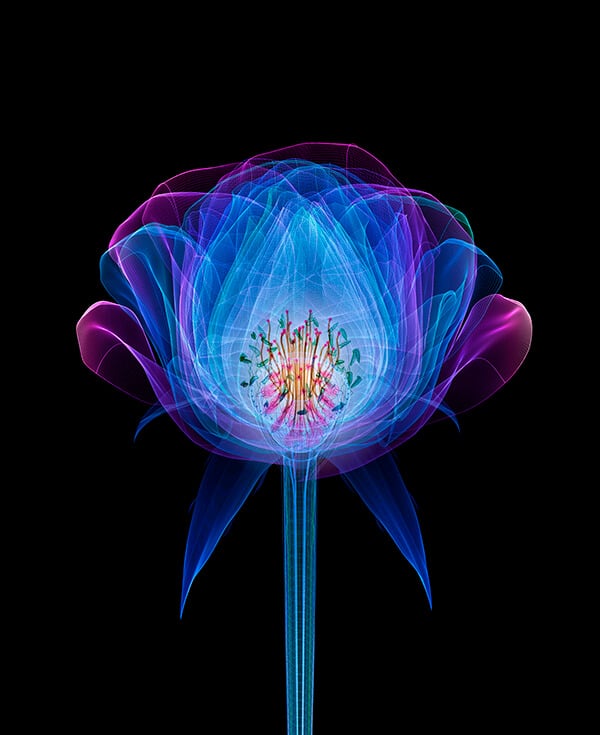
Your work is defined as “Botech Art”, a symbiosis of Botanical Art and Technology. Can you please explain us the general concept and how the initial idea came to you.
I referenced a few types of materials while coming up with the ideas behind my art. Botanical illustrations were among them. Botanical illustrations are pictures of plants that are both botanically accurate and artistic. Another strong influence was technical art, which depicts the structure of machines through the use of transparency. Technical art is an expressive method that evolved from blueprints for buildings and machines. Although these two types of art focus on different subjects, they have several points in common, including their explanatory purpose and highly precise depictions. Those shared elements piqued my interest. Also, both have a kind of visual appeal that is exciting just to look at, and, to me, easy to understand. Considering that, I thought that combining the two might yield a unique form of expression. I named the fusion “Botech Art,” a combination of “botanical” and “technical.” As I refined the ideas behind Botech Art, I coined the term “Inorganic flora” for my artworks modeled after plants. The concept of these works is to pursue and magnify the possibilities of plants’ beauty by focusing on aspects that are not normally appreciated, such as their inorganic and mechanical elements. I have made creating these unique pictures of plants my mission.
You are scrutinising and depicting flora and more precisely the invisible side of it. What fascinates you about the delicate structure of a flower?
When I carefully observed a plant up close, I noticed that it had parts that did not fit my preconceptions of a plant. That surprised me, and although I had never given plants much thought before, I was immediately filled with a strange kind of curiosity and desire to know more. For example, roses are considered very beautiful and elegant because of their colour, scent and the way their petals overlap. However, most people are not aware of what the inside of a rose is like, or what its stamen or pistil is like. When you observe those internal parts, you can see a hidden beauty in roses that differs from the stereotype. That beauty lies in the rose’s orderly and elaborate structure, and the way each part intricately intertwines. Because of having studied architecture at university, I became interested in plants as structural objects. Flowers, once simply an object of appreciation, became an object of study for me. My way of looking at and thinking about plants greatly changed, which led me to view various things from a more analytical point of view. I believe that, through my art, I am pursuing a more substantial kind of beauty than what is on the surface.
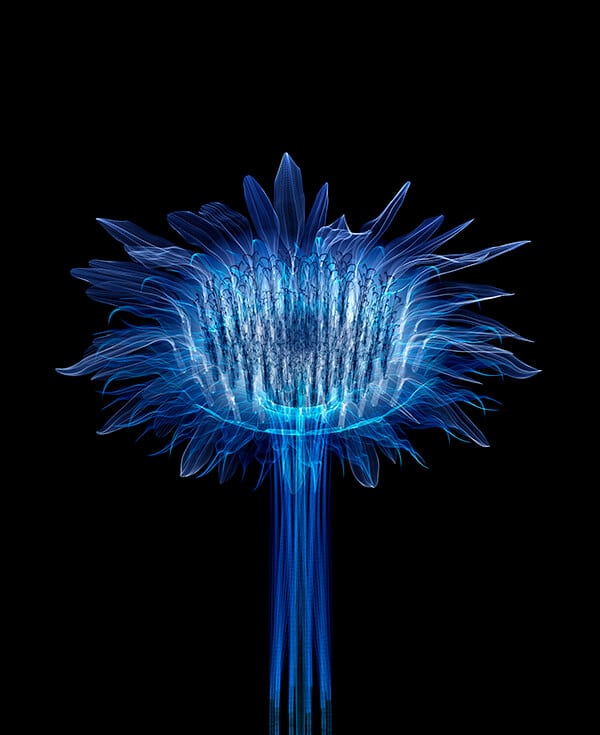

What is your personal definition of “invisible”.
Things and matters that are not recognized in the normal.
Your creative process is highly elaborated, which implies a lot of scientific research. Can you describe us your work methodology.
“Inorganic flora” – This series of works explores the possibilities of the beauty of plants by focusing on their hidden charms, especially their inorganic and mechanical aspects. It is an important concept in my artistic expression.
The creation process is as follows:
① Search for a plant to serve as a model, using a real flower whenever possible.
② Dissect its components, such as the petals and ovary, and analyse all of model’s details.
③ Sketch and photograph each component of the dissected and analysed flower.
④ Use 3Ds Max (3D computer graphics software) to create a 3D model of the flower’s form and structure.
⑤ Use Photoshop to layer images of the components on each other and reconstruct the flower as a computer graphic.
⑥ Label each part with the measurements, name of the structure, scaling, scientific name, etc., in small text.
You could recognise this process as the creation of a “scientific flower”. In other words, a flower that has been carefully analysed, thoroughly measured, rigorously labeled, and clearly exhibited. This is not simply an image of a plant. It is an expression of intellect, a symbol of a gaze that carefully observes nature. The transparency of the work lies not only in its appearance, but also its meta suggestion that a fully understood subject is equal to a world with transparency. By juxtaposing botany and technology, the scientific quest to understand the universe is merged with the romantic aroma of transparency to become a next generation “flower.”
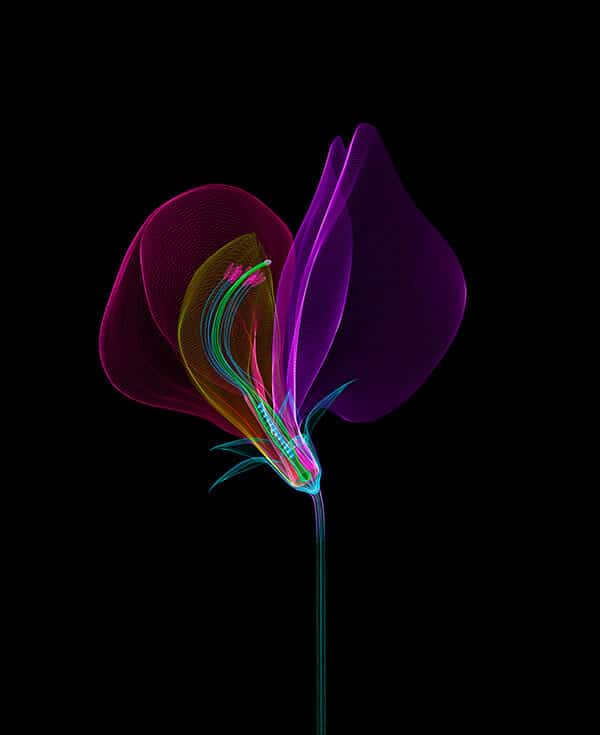
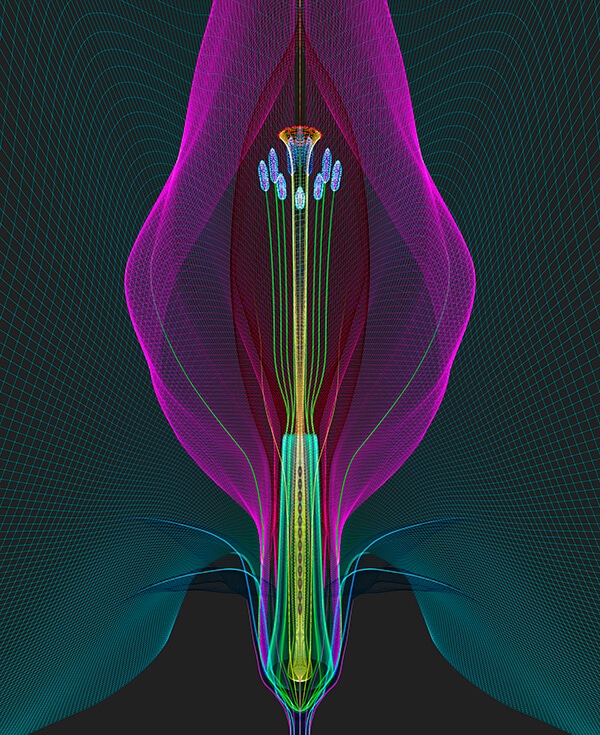
How much time it takes you to create one of your art pieces? What are the aspects of the technical process that you enjoy most?
It may take a month or a year, depending on the object greatly. My most enjoyable process is to dissect the plants. This moment there are a variety of discovery, intellectual curiosity will come overflowing endlessly. Also, when I could ideally express the information obtained from that analysis, it might be said that it is as exciting as the analysis moment.
The transparency of the plant structure is not only a physical feature, but also a visual language that bring the audience to another dimension. Why did you choose Art as source of expression?
Art, science and technology, among other things, each play a role in my works. There is no clear line separating these things; their boundaries are blurred and their territories are mixed. The reason I nonetheless decided to present my works as art is that, to me, art was something very distant—something difficult to understand. Art, science and technology were all things I studied and interacted with at school and in my daily life, but I found art particularly difficult to approach. I knew that I was bad at it. On the other hand, a part of me was full of curiosity to see the same world that artists saw. At the moment I finished the piece that originated my current work in university, I felt like I had experienced part of the psychology of an artist. It filled me with excitement just to imagine what sort of scenes I would see, and what sort of life awaited me, if I followed the path of an artist with my works. Under those circumstances, it was inevitable for me to choose the path of art.
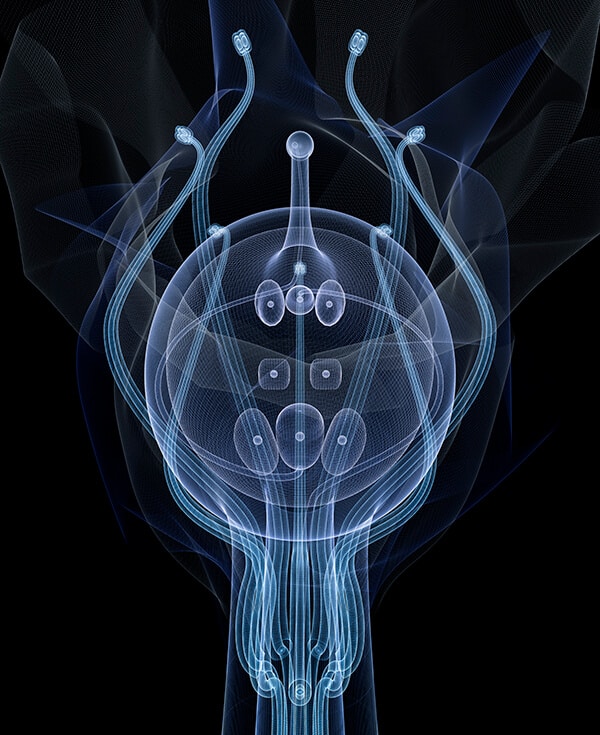
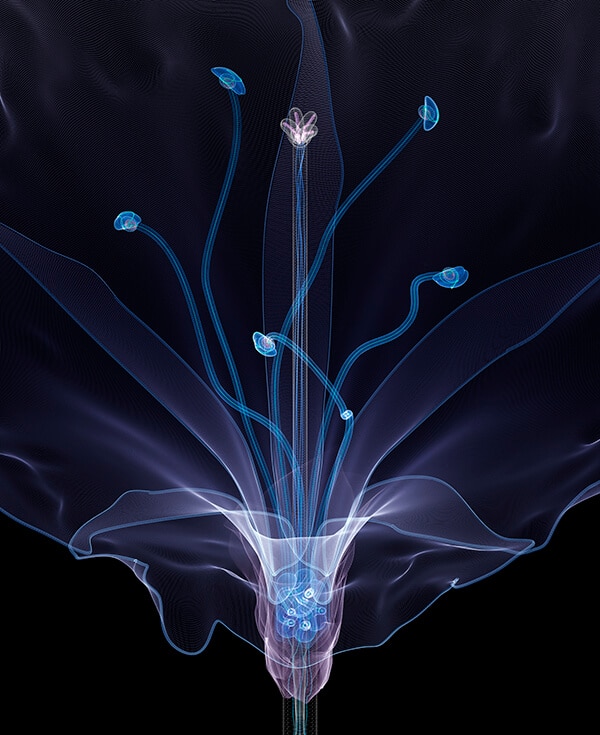
Had Japanese culture influenced your artistic aesthetic? Who are your inspirations?
I think that the so-called Japanese temperament such as cleanly, delicate, disciplined, orderly, patiently and seriously, is reflected to my art. However, I never thought that traditional Japanese culture and art influenced my work.
Realising such meticulously detailed images involves a lot of patience, curiosity and devotion. To what extent do your work mirror your personality?
60%. I like observing and thinking precisely like the appearance of the work. However, it does not mean that my works reflect 100% of such features. Rather than trying to express 100% in the work, I think that finishing becomes smarter if it keeps it to 50% to 60%. And as a result I think that what I want to express becomes clearer and the quality of the work will become higher.
Send a message to your future self.
I do not understand because it is outsider.
Ask us a question.
Don’t stop studying hard for all your life long.
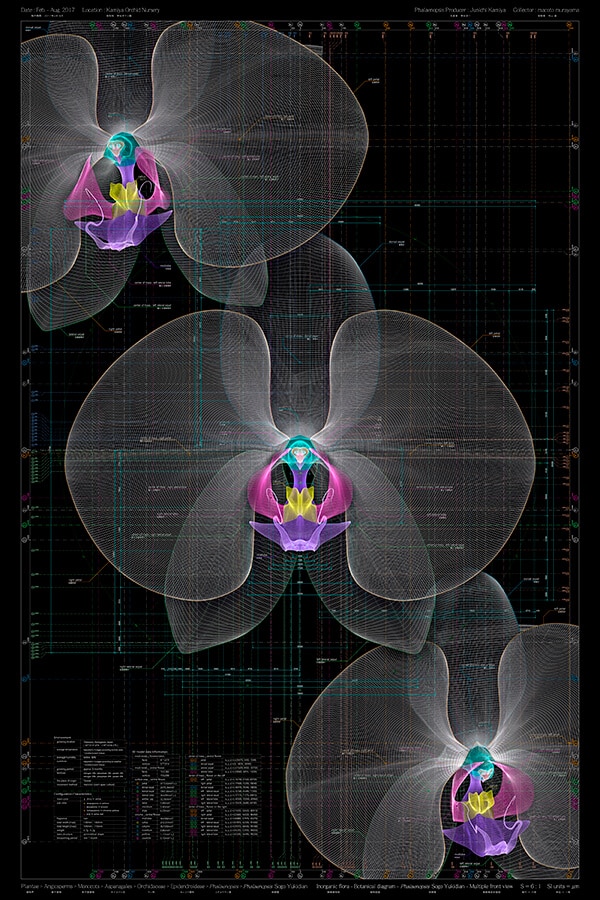
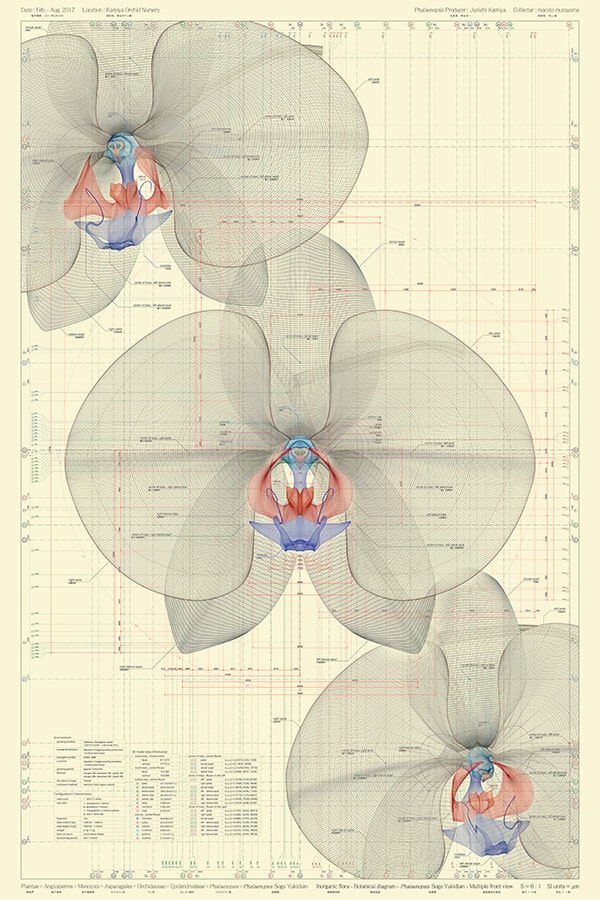
Artist: Macoto Murayama

